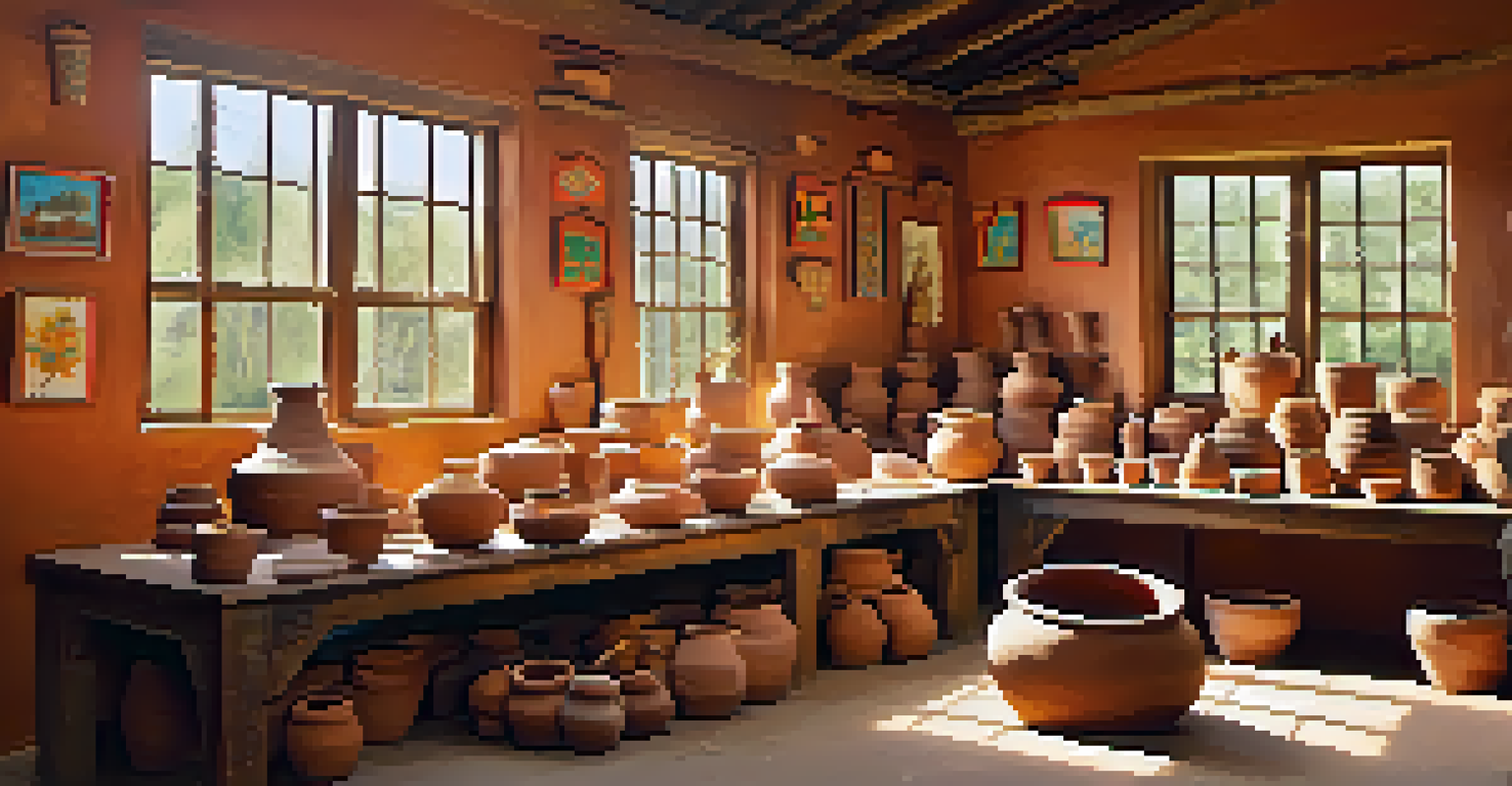The Role of Heritage Centers in Preserving Indian Culture

Understanding Heritage Centers and Their Purpose
Heritage centers are institutions dedicated to preserving and promoting cultural heritage. They serve as vital repositories for artifacts, art, and traditions that define a community's identity. In the context of India, these centers play a crucial role in safeguarding the rich tapestry of languages, crafts, and customs that have evolved over centuries.
Preservation of heritage is an act of love, a way to connect the past to the future.
These centers not only house physical artifacts but also serve as educational hubs where visitors can learn about the significance of various cultural practices. They offer workshops, exhibitions, and seminars that engage both locals and tourists. By doing so, they foster a deeper appreciation of diverse traditions and encourage intergenerational dialogue.
Additionally, heritage centers often collaborate with local artisans and cultural practitioners to ensure that traditional skills are passed on. This approach not only helps in preserving ancient crafts but also empowers local communities economically. By valuing and promoting their unique heritage, these centers contribute to the sustainability of cultural practices.
The Preservation of Traditional Arts and Crafts
One of the most significant roles of heritage centers is the preservation of traditional arts and crafts. These centers often feature exhibitions that showcase skilled artisans and their time-honored techniques. Visitors can witness firsthand the intricate processes involved in creating handmade textiles, pottery, and other crafts, which helps keep these traditions alive.

Furthermore, heritage centers frequently organize training programs aimed at young artisans. By providing mentorship and resources, they ensure that traditional skills are not lost to modernization. This initiative is crucial in a rapidly changing world where many young people are drawn to urban lifestyles, often at the expense of their cultural heritage.
Cultural Preservation Through Education
Heritage centers serve as educational hubs that promote the understanding and appreciation of diverse cultural practices.
In this way, heritage centers act as a bridge between the past and the present. They not only highlight the importance of these arts in cultural identity but also advocate for their relevance in contemporary society. By promoting traditional crafts, they contribute to a sense of pride and belonging among communities.
Heritage Centers as Educational Institutions
Heritage centers serve as important educational platforms that provide insight into India's diverse cultural landscapes. Through guided tours, workshops, and interactive sessions, these centers educate visitors about the historical and cultural significance of various practices. This hands-on approach fosters a deeper understanding and appreciation of India's multifaceted heritage.
Culture is the widening of the mind and of the spirit.
Schools and universities often collaborate with heritage centers to organize field trips, enhancing students' learning experiences. Such partnerships can spark interest in cultural studies and encourage students to explore their own heritage. By integrating cultural education into academic curricula, these centers play a vital role in shaping future generations' perspectives on their identity.
Moreover, the educational initiatives offered by heritage centers often extend beyond local communities. They attract international visitors, promoting cross-cultural understanding and dialogue. This exchange of ideas enriches both locals and visitors, creating a global community that values diversity.
Role in Cultural Tourism and Economic Development
Heritage centers significantly contribute to cultural tourism, attracting visitors eager to learn about India's rich traditions. By showcasing local culture and crafts, these centers create a unique experience that draws tourists, thereby boosting the local economy. This influx of visitors provides opportunities for local artisans and businesses to thrive.
Additionally, heritage centers often organize cultural festivals and events that celebrate regional traditions. These events not only enhance the appeal of the center but also serve as platforms for local artists and performers to showcase their talents. Such initiatives help preserve traditional performing arts while providing economic benefits to the community.
Economic Growth via Cultural Tourism
By attracting tourists, heritage centers boost local economies and provide opportunities for artisans and businesses.
Furthermore, the economic impact of heritage centers extends beyond tourism. By engaging in community development projects, they often address social issues such as poverty and unemployment. Through skill development programs and workshops, these centers empower individuals, leading to sustainable economic growth.
Community Engagement and Participation
Heritage centers thrive on community engagement, inviting local residents to participate in various programs and initiatives. This involvement fosters a sense of ownership and pride among community members, reinforcing the importance of their cultural heritage. By actively participating, locals contribute their knowledge and skills, enriching the center's offerings.
Moreover, heritage centers often serve as platforms for dialogue and collaboration among different cultural groups. By hosting events that celebrate diversity, they promote understanding and cohesion within the community. This spirit of inclusivity helps bridge gaps between generations and cultural backgrounds, creating a more harmonious society.
Additionally, community participation in heritage centers can lead to the revitalization of local traditions that may be at risk of fading away. When residents are encouraged to share their stories and practices, it inspires others to embrace and preserve their heritage. This collective effort is vital for maintaining the cultural fabric of a region.
Preserving Languages and Oral Traditions
Languages and oral traditions are integral to cultural identity, and heritage centers play a crucial role in their preservation. Many centers conduct workshops focused on endangered languages, offering classes that encourage younger generations to learn and speak their mother tongues. This effort is vital not only for communication but also for maintaining a connection to cultural roots.
In addition to language preservation, heritage centers often document oral histories, collecting stories from elders within the community. These narratives provide valuable insights into the past, highlighting traditions, beliefs, and experiences that define a culture. By preserving these stories, centers ensure that future generations have access to their heritage.
Community Engagement Enhances Heritage
Active community participation in heritage centers fosters a sense of pride and helps revive local traditions.
Furthermore, the promotion of languages and oral traditions fosters a sense of pride among community members. When individuals see their culture being valued and celebrated, it strengthens their identity and encourages them to pass on their traditions. This cycle of preservation is essential for the continuity of cultural heritage.
Challenges Faced by Heritage Centers Today
Despite their vital role, heritage centers face numerous challenges in today's fast-paced world. One major issue is funding; many centers rely on donations and grants, which can be unpredictable. This financial instability can hinder their ability to offer programs and maintain facilities, impacting their overall effectiveness in preserving culture.
Another challenge is the rapid globalization that often threatens local traditions. As cultures blend and evolve, some traditional practices may be at risk of disappearing. Heritage centers must find innovative ways to adapt and promote these practices while remaining relevant to younger audiences who may be drawn to modern influences.

Finally, the lack of awareness about the importance of heritage centers can limit community support. Many people may not fully understand the role these institutions play in preserving culture. By raising awareness and educating the public, heritage centers can cultivate stronger community ties and promote a shared commitment to cultural preservation.